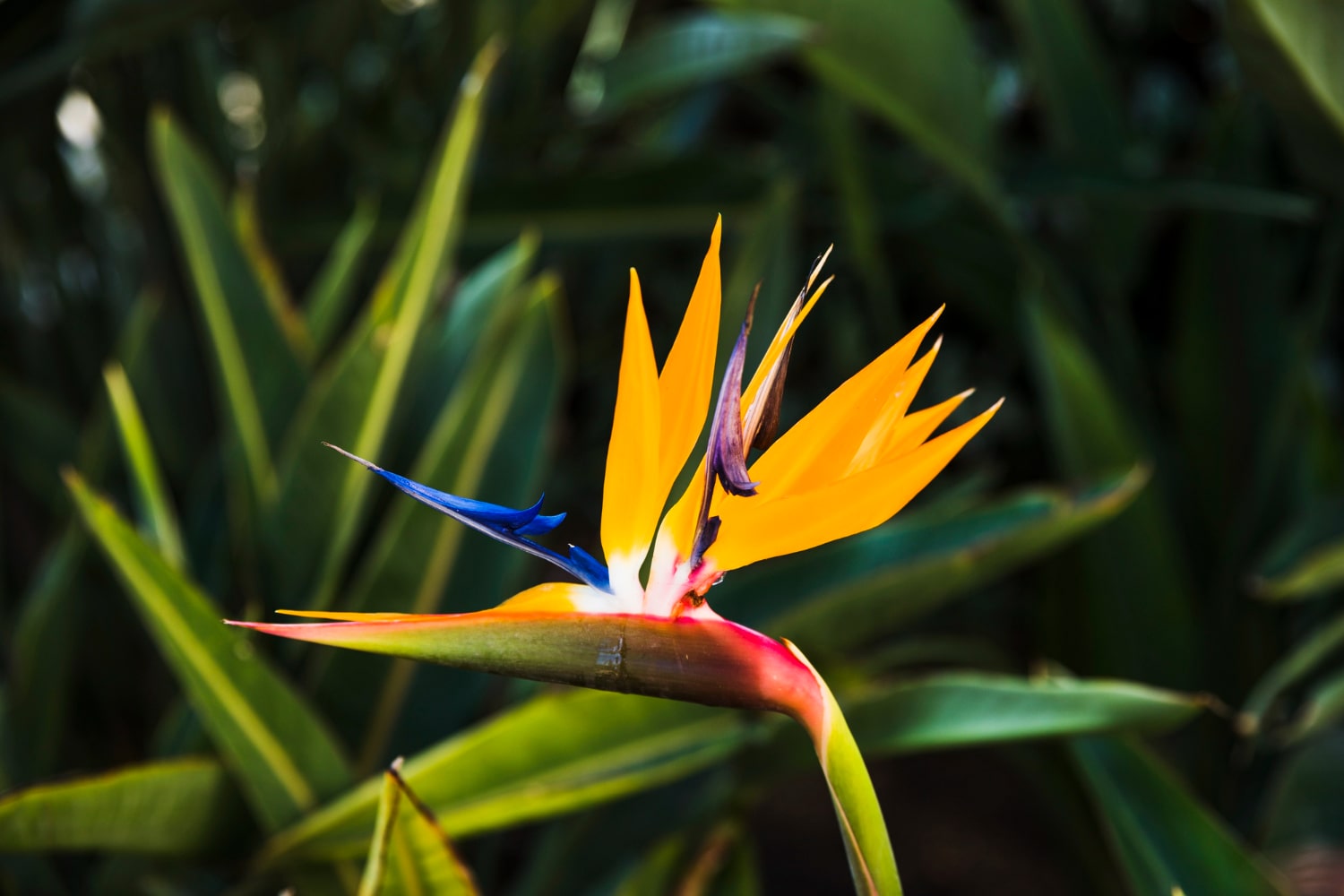The bird of paradise plant is one of the most striking and original ornamental plants, often admired for its exotic appearance. Its unique shape and vivid colors make it a centerpiece in gardens, conservatories, and indoor spaces. Native to South Africa, the plant has gained popularity across the globe. In addition to its beauty, the bird of paradise carries historical, scientific, and cultural value. Here are some fascinating facts about this remarkable plant that you might not know.
- The name of the bird of paradise plant was given in honor of Queen Charlotte of Mecklenburg-Strelitz, the wife of King George III of the United Kingdom. Its Latin name Strelitzia reginae reflects her noble heritage. This royal connection gives the plant a sense of elegance and prestige.
- Due to the shape and coloration of its flowers, the plant is commonly known as the bird of paradise. The orange, yellow, and blue petals resemble the feathers of an exotic bird. This appearance makes the plant instantly recognizable.
- In its native environment, the bird of paradise grows in the subtropical climate of southern Africa. Its thick, leathery leaves help it survive dry conditions. The flowers are pollinated by nectar-feeding birds, illustrating a remarkable natural partnership.
- With proper care, the bird of paradise can reach up to two meters in height. Its leaves are similar to those of a banana plant, although they are not closely related. This resemblance is due to adaptation to similar climates.
- The plant is long-lived, often surviving for decades and producing new shoots each year. In favorable conditions, it blooms seasonally and consistently. Its resilience makes it a prized choice for gardeners.
- From seed to bloom, the bird of paradise takes about four to five years to flower. Though it requires patience, the spectacular result is well worth the wait. Growing this plant is a rewarding experience for patient gardeners.
- While it looks similar to banana plants, the bird of paradise belongs to its own botanical family, Strelitziaceae. This family includes only a few species, making it quite rare and scientifically valuable. Botanists consider it a unique specimen worth preserving.
- The plant’s flowers are popular in floral arrangements and bouquets. Once cut, the blooms can stay fresh for up to two weeks. They symbolize freedom, beauty, and a joy for life.
- The seeds of the bird of paradise have a fluffy orange tuft that helps them spread by wind or animals. This is a clever natural adaptation for reproduction. The seeds are both functional and visually interesting.
- The plant thrives in greenhouses and indoor gardens where it can get plenty of light and warmth. It needs regular watering and protection from cold temperatures. Below 5°C, the plant may become damaged.
- In addition to the well-known Strelitzia reginae, there are other species with white or violet flowers. One example is Strelitzia nicolai, which grows taller and is ideal for landscaping. The variety of species adds to the plant’s ornamental appeal.
- The bird of paradise is the official flower of Los Angeles. It can be found lining streets and filling city parks. It has become a symbol of sun, energy, and tropical lifestyle.
- In many cultures, the plant represents luck, courage, and new beginnings. It is often given to celebrate milestones and achievements. Its symbolic meaning makes it a thoughtful and uplifting gift.
- The plant is also studied in biological and ecological research. Its bird pollination mechanism is a fascinating example of evolutionary cooperation. Scientists from various fields find it an intriguing subject of study.
- Although the plant is not toxic to humans, it is not recommended for consumption. Some parts may be mildly harmful to pets. It’s wise to keep it out of reach of cats and dogs in the home.
- While the bird of paradise rarely blooms indoors, it can flower with proper care. Essential conditions include bright light, moderate watering, and nutrient-rich soil. When it finally blooms, it offers a spectacular reward.
These interesting facts highlight that the bird of paradise is not only a beautiful ornamental plant but also one with rich cultural and scientific significance. It impresses with its looks, history, and ecological role. The plant stands as a symbol of harmony between humans and nature. If you’re looking to add a touch of the exotic to your home or garden, the bird of paradise is an excellent choice.





